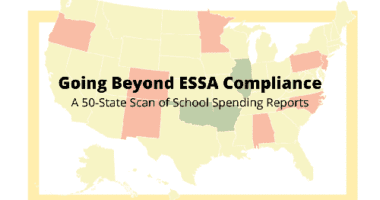Ensuring All Students Count in School Ratings
This post first appeared on the PIE Network’s website, where they invited us and others to answer the question: Without ESSA regs, how do we leverage the law?
School rating criteria that are based on how schools are doing for all groups of students — including low-income students, students of color, students with disabilities, and English learners — can send a powerful signal that the achievement of all students matters, and that schools have a responsibility to serve all students well.
ESSA represents an opportunity and a responsibility to craft equity-focused ratings systems.
Specifically, the law requires that school ratings must:
- Be based on how schools are performing for each student group on each of the indicators that are part of the ratings criteria.
- Differentiate any school that is consistently underperforming for any student group on the indicators that are part of the rating criteria.
The law also requires any school that’s consistently underperforming for any student group to take action to improve. To learn more about how states can ensure that all groups of students count in school ratings, read this fact sheet from the Students Can’t Wait workgroup, or listen to this webinar with tons of good material and examples. But for busy advocates, we’ve identified three trends we’re seeing in draft state plans that would undermine ESSA’s equity goals and that we urge you to be vigilant against:
- Supergroups in place of individual student groups. Supergroups (combining individual student groups by race, ethnicity, family income, or all of these to create one large group for school accountability purposes) hide more than they reveal about student performance. One group’s fast progress could mask another’s stagnation or decline.
- Weak criteria for identifying schools that are consistently underperforming for one or more groups of students. Some states say that they will consider schools to be “consistently underperforming” if they are doing worse for a group of students than other schools are for that same group. This approach not only sets low expectations, it also sets different expectations for each group. For example, a school where 40 percent of White students are on grade level may have to take action to improve, but a school where 40 percent of Black students are on grade level may be considered just fine.
- Parallel, separate systems that allow schools that are not doing well for a group of students to still get the highest ratings. Some states describe their rating systems and how schools will be identified for Targeted Improvement based on having one or more consistently underperforming groups — but they don’t describe how the two will interact. This sends the message that even if schools are not doing well for a group of students, it doesn’t really matter because they can still get a top rating.










